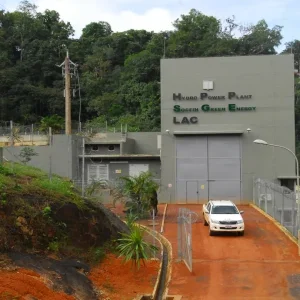
Heating is one of the world’s most carbon-intensive demands but one company has developed a potential answer using a geothermal energy system.
In the US, specifically, buildings account for 39% of all carbon emissions, with the combustion of fossil fuels historically being key to regulating their temperature, particularly in colder areas.
Not only does this have negative impact on the environment, it also leads to high fuel prices for customers around the world during cooler winter months.
Dandelion, an offshoot from Google’s X laboratory, is seeking to provide an answer and has developed what it claims is a clean, affordable solution.
Dandelion’s geothermal heating system and journey so far
Dandelion’s geothermal system uses high-performance equipment in tandem with an installation process they claim is particularly low-cost.
It absorbs heat from the ground during winter months when it is warmer than the air and transfers it to a heat pump, which circulates warmth around a building.
During summer months, when the ground is cooler than the air, the system does the opposite, removing heat from the air and redistributing it into the ground below.
The company’s founder Kathy Hannun came up with the idea for the Dandelion system when she was testing the feasibility of geothermal energy as means for replacing fossil fuels in heating and cooling.
Key to her technology is the low cost of its installation, which differs from similar products on the market which typically come with large upfront costs.
Ms Hannun’s system is also designed to be simpler to set up, using an enhanced drill that reduces the mess associated with installing ground loop pipes.
Two years of prototyping the product later and Dandelion graduated from the X lab to became its own independent company and is currently selling to customers across the state of New York.

What is geothermal power?
Like coal, gas or nuclear power facilities, a geothermal power plant converts heat to electricity.
It does this using high-temperature heat – known as geothermal energy – from the Earth, accessed by drilling hot water or dry steam wells in a process similar to drilling for oil.
The hot water or steam is piped to the surface and used to power turbines that generate electricity.
According to the International Energy Agency (IEA), in 2017, global geothermal power generation was an estimated 84.8TW/h, while cumulative capacity reached 14GW.
Global geothermal power capacity is expected to rise to just over 17GW by 2023, with the biggest capacity additions expected in Indonesia, Kenya, Philippines and Turkey.
It is estimated that, as a source of renewable energy for both power and heating, geothermal has the potential to meet 3-5% of global demand by 2050.
A closer look at Google’s X laboratory
Founded in 2010, the research and development facility is operated by X Development LLC, a subsidiary of Google’s parent Alphabet, and is located about a mile and a half away from the US conglomerate’s headquarters in Mountain View, California.
The work carried out there by various entrepreneurs and scientists is overseen by Astro Teller, CEO and “captain of moonshots” – otherwise known as ambitious ideas worth pursuing, from driverless cars to energy-harnessing kites.
He writes on the X website: “An X project must solve a problem that affects millions or billions of people; it has to have an audacious, sci-fi sounding technology; and there has to be at least a glimmer of hope that it’s actually achievable in the next five to ten years.
“Over the years, we’ve gotten better at finding and developing moonshots that satisfy these criteria, and we’ve learned a lot along the way – what makes this really difficult is that innovation is a delicate thing.
“You can’t over-process it; you have to respect weird creativity and serendipitous discovery – but if someday you’re going to harvest the fruits of that innovation in the form of revenue and profits, you need to find just the right amount of structure.
“That’s why we’re trying to build X into a ‘moonshot factory’.”






